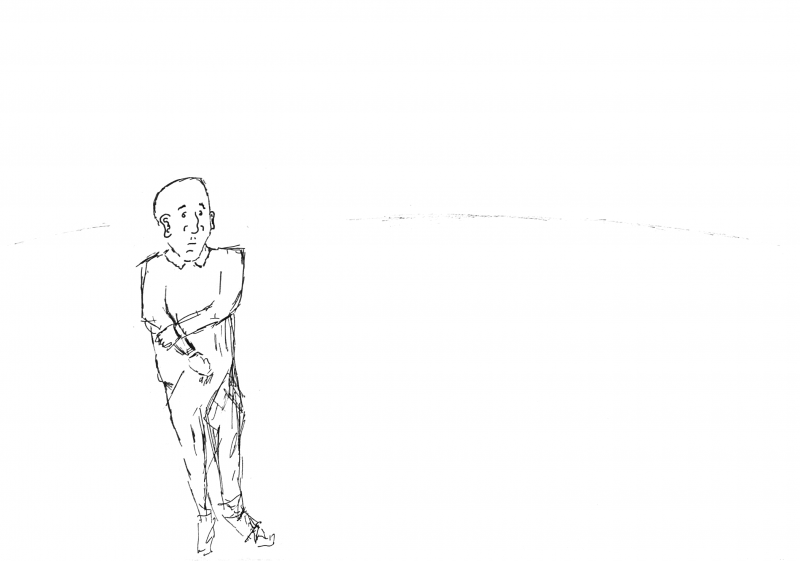
“‘Powerviolence’ was said for the first time in late 1989. … We wanted to come up with our own description of our sound, and out of the blue [Matt Domino] just said ‘fuckin’ powerviolence.’ Then it was ‘west coast powerviolence.’ We were trying to give it a sense of humor, like ‘our geographical location is better than yours,’ and give it a serious brutality.” – Eric Wood (Neanderthal, Man Is The Bastard, Bastard Noise)[1]
Contributing to the demise of hardcore in 1984, heavy metal exploded in popularity via its two disparate but adjacent forms: glam and thrash. Both forms have Los Angeles as a site of specific importance. Glam became a living and breathing subculture on the Sunset Strip, a partial resurrection of the leather-bound, drugged-out Hollywood scene that housed X, The Germs, and The Bags less than a decade before. On one level, glam in its heyday can be seen as a hybrid of the early Hollywood punks’ aesthetics and lifestyles (sex, drugs, and dirt cheap living) with the musical sensibilities and economic mentalities of the new wave bands that directly replaced those punks (The Go-gos, The Knack, The Runaways). Glam was, in a way, a culmination ready for consumption. Thrash, on the other hand, an offshoot, a mutation, a runaway train.
Musically, thrash takes its cues from what is called the “new wave of British heavy metal” (most recognizable in bands like Judas Priest, Def Leppard, and Iron Maiden) and hardcore punk. If we think of it geographically, thrash metal is a British subculture overlaid on a Southern California landscape. Not only do three of the “Big Four” of thrash have their roots in Los Angeles (Metallica, Megadeth, and Slayer; New York’s Anthrax being the outlier), but a particularly Los Angeles band, Suicidal Tendencies, helped lay the groundwork for thrash and the hardcore-tinged “crossover thrash” genre with their self-titled 1983 debut. Suicidal Tendencies not only explores the steady, upbeat-tempo rhythms of thrash but pairs them with guitar solos and shimmering production, both of which were uncharacteristic of hardcore at the time. It’s equally worth accounting for East Coast hardcore pioneers Bad Brains and their once long-awaited, self-titled 1982 debut, which exhibited similar characteristics but is sidelined from the thrash canon likely because their tempos tended to be much faster and showed little metal influence.
These two styles—glam and thrash; the two most widely commercialized and popular forms of metal throughout the mid-to-late 80s and around the globe—bear fundamental ties to Los Angeles, which gives specific weight to a more esoteric movement that followed: powerviolence, a product of Southern California suburbs where hardcore once originally found its footing.
Ascension and Decline: Built to Self-Destruct
Penelope Spheeris’s vivid 1989 documentary The Decline of Western Civilization II catches the Hollywood glam rock scene at its tail end. Via her interviews with musicians, fans, groupies, and club owners, Spheeris paints a telling picture of the psyche behind a scene often portrayed as brainless or of little emotional depth. The biggest takeaway is that glam rock was built upon a con operating within a particularly American success fantasy much like the American dream that punks rejected less than a decade earlier. This con thrived upon bands who started with a tried-and-true punk impulse: young white men realized they could play guitar at least as well as their idols, only the idols in this case were rich and famous. Seeing the extravagant lives members of Aerosmith and Kiss members (both also interviewed), countless young and (more-or-less) attractive rockers dreamed of their own success. Unfortunately and unbeknownst to them, many of these young bands lacked the chief allure captured by those before them— the charisma of The Rolling Stones, the mystique of Black Sabbath, the impressive camp of Alice Cooper, or the gall of Motörhead, all of whom loom large in the background.
Spheeris presses into many of these less successful rockers, asking them what they will do if rock and roll doesn’t pan out. The response across the board is the same: failure is not an option. It comes at the level of theological devotion to the genre, a blind faith that if they want it badly enough, if they try hard enough, if they keep at it for long enough, they will find success. This notion is also conveniently reinforced by Aerosmith’s Steven Tyler and Kiss’s Paul Stanley, both of whom, of course, believe it to be so. Alongside the constant presence of enamored groupies, who saw these young men through rose-colored glasses and thus reinforced their ambitions, the few blatantly mediocre talents that found their way to MTV provided the foundation of the glam fantasy. For young glam rockers, their future rests upon fame and fortune in a high rise, or else dead in the gutter.
This differs starkly from the “no future” ethos of hardcore, in which if fame was in the cards, it could certainly be found from within the gutter (lore has it that the Germs vocalist scribbled “Here Lies Darby Crash” on the wall above the spot where his own dead body would soon lie, immortalized by a punchline). The punks were always already in the process of dying. If that’s contradicted by some of their latter-year romanticism, it’s because some of them accidentally survived.
So when I speak of punk here, I mean a particular type of hopelessness, one that is an affective response to a bleak reality: running oneself into the ground or otherwise spasmodically squirming under the pressure; being loud as hell and being certain that it ultimately amounts to little noise. What I’m getting at here is hardcore as it relates to a sadomasochistic use of the term, an autoerotic impulse to step on yourself, to get in your own way, to treat yourself like trash. It’s in Henry Rollins’ and Darby Crash’s self-loathing. It was there in Iggy Pop’s and Alan Vega’s proto-punk self-immolation. It was there from the start but lost as delusions of success (and sometimes, frankly, delusions of political agency) developed. What I’m talking about is hardcore as a tool for the enunciation of panic and disillusionment. It couldn’t last long. It didn’t. But in the cracks of its short run (Reagan’s first term, 1981-1984) were a handful of records that exemplified the genre’s potential and preempted darker styles to come.
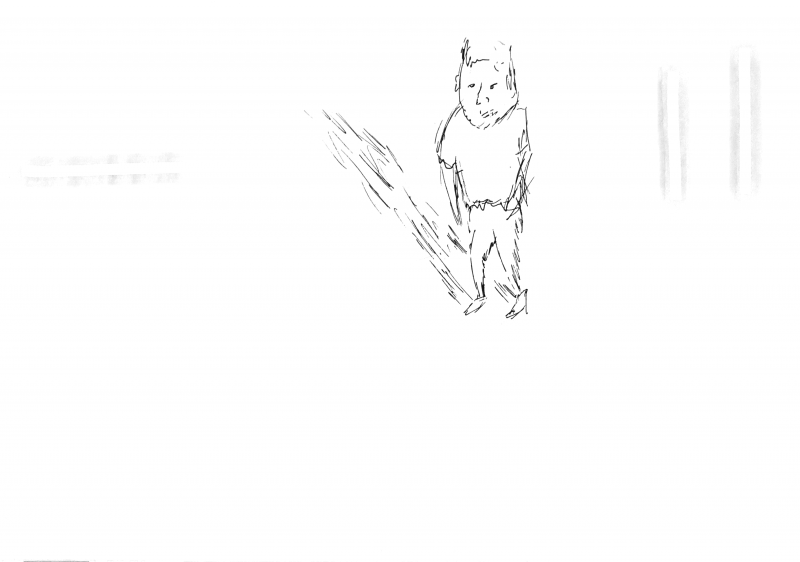
The Seeds of Tomorrow: Early Tracings of Powerviolence and Grindcore
“It was about musical fighting. Treacherous examinations of humans defacing themselves or injuring their psyches. Powerviolence was hyper-driven violent signals with human freak subject matter.” – Eric Wood[2]
Grindcore and powerviolence are sibling genres whose pioneering albums arrived in 1987 and 1988 respectively: Napalm Death’s Scum and Infest’s Slave. The two genres are often said to be nearly indiscernible from one another (and this becomes more accurate as they cross contaminate in later years), but if we take these two albums as the blueprint for each genre, there is a notable difference. Forged in England, Napalm Death’s sound carries the dark claustrophobia and dense, noisy, unbrokenness of their earliest influential figures Black Sabbath, Motörhead, Crass, and Discharge. Growls and blasts sound as if they are ricocheting across dungeons before reaching us, expressing a deep existential dread. On the other hand, Infest’s Slave is frenzied and crisp. It’s riddled with quick changes in style and direction that feel symptomatic of the bland suburban Southern California landscape the band grew up in. Such quick changes were once characteristic of early SoCal punks Minutemen, Black Flag, Flesh Eaters, and Descendants.
Because of a long lull in hardcore (which I will trace in the next section), it can appear that these two bands arrived with a fury out of nothing. However, they are, of course, not without their precedents. From the midst of the hardcore era — 1982, namely — we can hear the first incorporations of a new paranoid and spasmodic darkness. Two bands, D.R.I. and Negative Approach, release their debut EPs in 1982: Dirty Rotten EP and Negative Approach. These are the instigators of a sound that would take off nearly a decade later.
Evan Garner of Arkansas powerviolence band Burned Up Bled Dry notes, “The west coast powerviolence bands weren’t as much of an overt influence as they were sort of kindred souls—like, ‘Oh, other folks who love the first D.R.I. record!’ We thought that we played hardcore punk, just like all the bands that were part of the scene.” This speaks to the strength of the D.R.I. record as an underlying and foundational influence. Dirty Rotten EP, made by a Texas group of teens who practiced in their parents’ basement, establishes the cut-and-paste method of song composition from it’s very first track. “Sad to Be” begins with a pummeling up-tempo hardcore rhythm that prefigures the textural potential of the blast beat before abruptly hitting the brakes and moving to a military march pattern. Tracks like “Busted,” “Capitalist Suck,” and “No Sense” introduce a conception of tempo and form that are flexible and retrofitted to meet the needs of the lyrics. The result is the choppy whiplash effect that would come to characterize powerviolence.
Detroit’s Negative Approach additionally pushed the envelope in 1982 with their debut EP. With ten songs in about as many minutes, the band provided a heavy blast that not only set a golden standard for hardcore punk in the Midwest, but pioneered the choppy stop-and-go aesthetic that only gained traction later on. The song “Pressure,” for instance, exhibits a full chorus-verse-chorus song form in a matter of 11 rumbling seconds during which every instrument is in rhythmic unison. This song alone is a clue as to why Napalm Death (notorious for the shortest song of their time, “You Suffer,” which, minus the reverb decay lasts about two seconds) would later name a song for them on their 1987 grindcore manifesto Scum.
Lastly, it’s worth noting UK anarcho-punks Discharge and their significant impact. Discharge are most well-known as the forebearers of the D-Beat drum pattern which is synonymous with many subsets of hardcore. The D-Beat is an accelerated rollicking kick-snare pattern that has a similar effect to Phil Taylor’s driving beats behind Motörhead. Beyond this significant contribution is Discharge’s melding of genres. As Craig Hayes writes, “For a brief shining moment, from 1980 to 1983, Discharge challenged prevailing notions of what punk was supposed to sound like, and in doing so revolutionized the prospects of metal.”[3] Discharge were a canary in the coal-mine testing the result that comes from aesthetically merging metal and punk sounds and aesthetics.
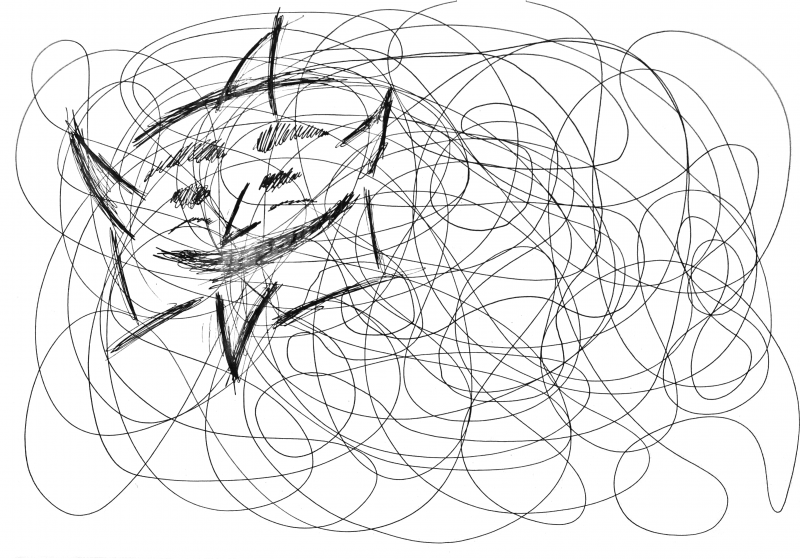
Punk’s Offseason
“I never took a lesson … If I actually knew how to play I probably would have jerked off all over the neck with goofy solos and long intros and killed off everything I’ve ever loved about what I call hardcore.” – Matt Domino (Infest)[4]
“I think it goes deeper to intent and lyrics and such. More of a punk approach than a metal one: basement shows, DIY ethics, less than perfect records.” – Evan Garner (Burned Up Bled Dry)[5]
The sound that comes to dominate the rock world during Reagan’s second term is one cozied up to capital; if punk is an ongoing strike against capital, this was the scabs stepping in and riding their way to success. Many popular metal bands did drum up controversy and ire from conservative America during this time but, in many cases, they sold more because of it. Everything became bigger, sexier, and, most importantly, more impressive. The popular forms of metal were more instantly self-justified because they were often more technically impressive than punk before them. The “Big Four” of thrash and the countless hair metal bands that ran concurrent to them were susceptible to capital flow because they were built in a way that satisfied the rubrics classic rock had laid out before them: the charismatic front man, the impactful riff, and the virtuosic guitarist chief among them. These metal bands were intelligible to a broader audience in a way that the very earliest punk and hardcore were not.
During Reagan’s second term many of the preeminent hardcore bands either broke up or stumbled through career transition attempts into the heavy metal scene. Gang Green, Negative Approach, Discharge, D.R.I., Agnostic Front, and others all eventually incorporated elements of the wildly popular thrash sound in their sophomore years, constituting the “crossover thrash” genre. These crossover thrash records frankly pale in comparison to these bands’ earlier outputs, suffering from over-polished production, belabored downtempo metal sections, and dragged out song forms.
In my opinion, one of the more successful results from this trend was the Cro-Mags’ Age of Quarrel (1986) which Cro-Mags lead singer John Joseph McGowan admits he views as a retrospective encapsulation of the scene.[6] On the other hand, many East Coast hardcore bands made less and less urgent work. Another New York band, Murphy’s Law, for instance, embraced a crossover sound on their self-titled debut (1986). Murphy’s Law manages to come off as particularly Californian despite its NYC origins. Songs about beer, girls, weed, and fun echo early Black Flag tracks like “Six Pack” and “TV Party,” but lack their existential core. Even their tongue-in-cheek sadomasochist ode “Ilsa” and their Stooges cover “I Got a Right” come off as mere quirky romps rather than peeks into the darkness. Murphy’s Law preempt the hokey ska revivalists of the 90s that they would later join: an unchallenging, populist response to the call put forward by west coast provocateurs like Dead Kennedys, Suicidal Tendencies, and Black Flag. Even Agnostic Front (who, I should mention, have ambiguously treaded the line of neo-fascist politics via skinhead association but whose first two releases are notable recordings in the pummeling style of hardcore that dominated the East Coast scene) later failed to capture the dread, claustrophobia, and paranoia present in, say, the music of thrash influencers Void or their crossover thrash analogs in Cryptic Slaughter and Corrosion of Conformity. Negative FX’s vocalist, Choke (a certain pioneer of the grunting and gasping style of vocals that would infect later hardcore and grindcore), would go on to form Slapshot, whose work is generally cohesive and functional but ultimately uninspiring. This is how the scene as whole dies out save for a few anomalies, Boston misfits Siege chief among them.
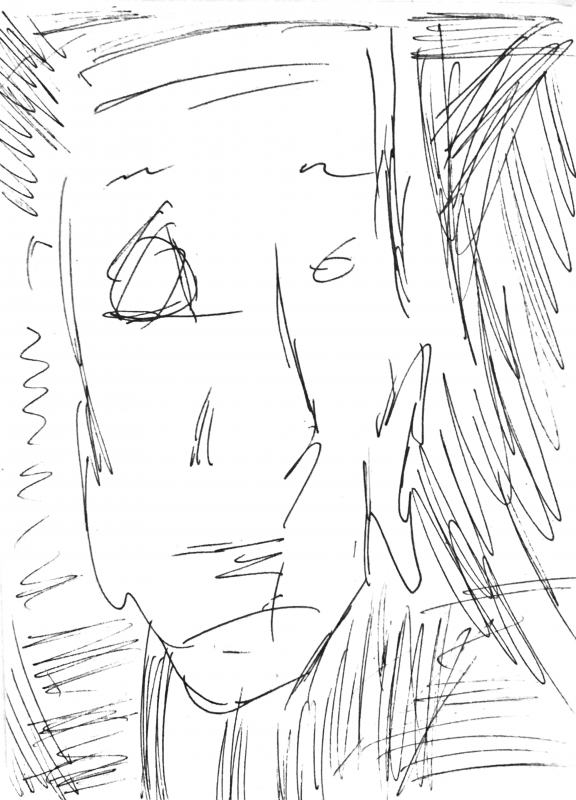
Siege’s Drop Dead
“They were some of the most unassuming, laid-back people to ever work with. I mean, they had no attitude at all. They just came in and they were just really polite and very thankful, and then when they turned on the amps and made that noise, it was just unbelievable that it was coming from them.” – Lou Giordano, Producer[7]
As hardcore punk’s tough-guy figureheads moved on from the scene’s original sounds and came to develop the work that I find much less lasting (the genres that resulted came to be known as crossover thrash and melodic hardcore), one band from the Boston hardcore scene (which bred Negative FX and SS Decontrol among others) released an album that viciously asserted a new pathway for hardcore, even if it wouldn’t be picked up on for another several years. Siege’s Drop Dead is an anomaly of its time. Its opening title track carries a similar madness to the John Zorn tracks that Michael Haneke would later apply to illustrate the depravity of his torturer-antagonists in Funny Games. Grunts and sludge abound, Drop Dead spills out of speakers with an impressive force and provides a template for the tempo changes and walls of noise that both powerviolence and grindcore would later pick up on.
Additionally, Drop Dead stays firmly rooted in the hardcore tradition throughout. Almost as a confirmation of this, Siege chose to end their album —which boasts track titles such as “Life of Hate,” “Armageddon,” and “Grim Reaper”— with a song about grades and perhaps feelings of insufficiency. “F-Minus” is a short chugging song that borrows its rhythmic cadence from Black Flag’s “Spray Paint” and, almost to accent its start-and-stop form, threatens to fall apart in an episode of feedback midway. If a bridge was needed to move fully from the banal frustration of early Southern Californian hardcore to the cosmic terror that animates powerviolence and grindcore, Siege provided it. As one Rate Your Music user, Frenchie, summarized succinctly on May 30th, 2008: “Siege is the birth and death of hardcore punk on one record.”
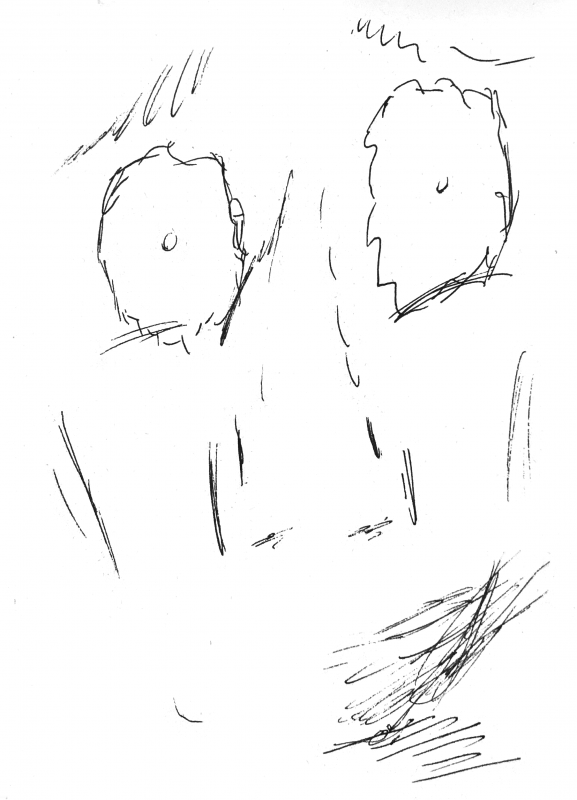
Infest’s Slave
Nonetheless, Infest’s Slave (1988) represents a pivotal moment in hardcore, a rebirth of the genre, one as definitive and as exploratory as Black Flag’s Damaged was in 1981. Today, it sounds absurd, like a rabid military general’s barked-out orders were transcribed and re-orchestrated to be sloppily, sweatily accompanied by guitars and drums. A trip through preexisting styles of extreme metal and hardcore punk, Slave takes an anti-musical, moment -to-moment pace. This is done in a way that is at once virtuosic, innovative, and anti-intellectual.
Slave sounds off with such an urgency and panic that it is able to be over-the-top and cartoonish while avoiding the wise-ass post-modernism that hangs over John Zorn and Naked City’s later FM-scanning grindcore. It’s this brutish immediacy and this hysterical, Looney Toons affect (the album zips through 18 tracks and just as many styles in 20 minutes) that makes Infest’s adopted political imagery all the more aesthetically effecting. It’s a howling, ironic enunciation of the very lack of political efficacy that a punk band has. It’s the traumas of the Vietnam war as processed in the pages of 1970s Captain America comics. This effect is accentuated by the fact that Slave’s production is clean and dry—especially compared to its predecessors—both neutering its impact and making its sharp turns feel more manic.
To represent it visually, think of boldly outlined comic figures — like those of Raymond Pettibon or those on the covers of Descendants and Screeching Weasel records — and how they differ from the impressionistic, busy, sketch-like artwork that came to represent extreme metal genres such as black metal, death metal, and grindcore. Just as Pettibon’s drawings juxtaposed a cartoon vocabulary with their often violent or aggressive content, Infest’s rage elicits shock because it is both apparent and ambiguous, dark and hilarious. Slave is bass heavy. Dave Ring’s bass rumbles and jitters through the song forms and everything else (guitars, drums, barking) conglomerates around it, barely sticking together. This disjunction is highlighted by the dryness of the recording, it lacks the forgiving smoothness that reverb and distortion can provide. Infest’s virtuosity (a near-sociopathic sort of hyper-specialized and individualistic technique and process) is betrayed and bolstered by their slapdash urgency. It’s the disquieting tidiness and precision of Norman Bates as he is barely holding it together.
The zany blend of cleanliness, aggression, brevity, and individualized skill on Slave all contributes to a work aware of its cosmic impotence but determined to politicize small elements within these punks’ ordinary everyday life. For Infest, this everyday landscape was the beige chaparral desert suburbs of Santa Clarita. It’s only fitting that the band’s founding members Matt Domino and Joe Denunzio met at the Six Flags Magic Mountain theme park:[8] Santa Clarita’s overcompensation for its own monotony; a global innovation site for thrills; the Southern California home of Loony Tunes and The Justice League no less. Infest regurgitate images of war and violence with the distance that a caricature provides. Not a work of romanticization nor agitprop, instead the powerviolence of Slave abstracts violence and puts it to use to combat the “boring dystopia” (to borrow Mark Fisher’s term) and quotidian micro-violences of contemporary life.[9]
An Aesthetic of Disempowerment
Sianne Ngai’s book Our Aesthetic Categories looks at three affective responses to late capitalism—the zany, the cute, and the interesting—in both popular media and the avant-garde (and hardcore as well as powerviolence surely lie somewhere on the spectrum between the popular and the avant-garde). Her point is that these aesthetic categories permeate our culture as a response to the structures of our lives. Although I would most quickly relate powerviolence and its change-on-a-dime form to the zany, I find Ngai’s comments on avant-garde poetry and its relationship to cuteness helpful. Ngai senses that avant-garde American poetry has, at times, embraced cute aesthetics to come to terms with its own “social powerlessness” and “lack of political consequentiality.”[10] She illustrates this using poem 23 from Bob Perelman’s 2004 book Playing Bodies:
Take that, That
And try some of this, This
Be yourself, Be
And don’t tread on me, Don’t[11]
There’s likely some coincidence to the fact that this reads like a Minor Threat lyric sheet from 1982, but I also find this example illuminating towards post-Reagan hardcore and its own sense of ineffectuality.
After first wave punk bands like The Clash, The Sex Pistols, and Ramones had long since made it clear that once-subversive aesthetics could be co-opted quite easily, and after the next wave fought tirelessly in the face of two Reagan terms to little effect, it’s easy to imagine it was no longer a good look for punks to portray a belief in their own political agency. Doing so would come off as quite naive. The result then is a radicalization of one’s own life, an acceptance of new standards of living that defy hegemonic order in small ways, even if the result is resigning oneself from any true political agency. Touring via an elaborate network of like-minded punks allows one respite from the demands of rent, for example. The early powerviolence scene (and the later gutter punk scene which is powerfully chronicled in Spheeris’s third Decline of Western Civilization installment) takes the shape of Crass’s anarcho-collectivism, but is far less principled, instead centering life around the disruptive activities of drinking, skating, and playing loud music.[12]
By Ngai’s reading, Perelman’s poem equates “poetic address with attack.” The implication is that this sentiment demonstrates the poem’s own inability to accomplish anything larger than itself, it is “a meditation on its own restricted agency.”[13] This “equation of poetic address with attack”[14] resonates with the use of direct address found across classic hardcore lyrics: lyrics addressing someone who is surely not listening (jocks, parents, Reagan). This case of a missing addressee in classic hardcore appears purely naive if one is on the outside, but from within the pit it would be generally understood that the product of this embittered address is the excitement of sympathetically resonant bodies. One shouldn’t necessarily expect actual political change from a hardcore song. Powerviolence folds that appearance of naivete in on itself in a self-conscious resignation. The grassroots political aesthetic of directed, aggressively voiced opinion had given way to a pragmatic approach that was more aligned with its practitioners’ surroundings. Instead of the Bay-bred political satire of the Dead Kennedys or the proximal fury of D.C.’s Bad Brains and Minor Threat, the result is an attempt to politicize concurrent activities (skateboarding, hanging out and getting drunk in a house) by way of aesthetics (music, album art, track titles) rather than to aestheticize political activity.
Powerviolence bands express one approach of tackling this head on. Their lyrics are often incoherent, nonsensical, or purely descriptive. As in that Perelman stanza, they equate the aesthetic act with attack. They are designed to go nowhere and contribute to nothing. Musically, powerviolence defies the order of the mosh pit: happening in short unpredictable bursts, it hardly maintains the energy necessary to move bodies. It presents an inert and interior music guided towards nothing.
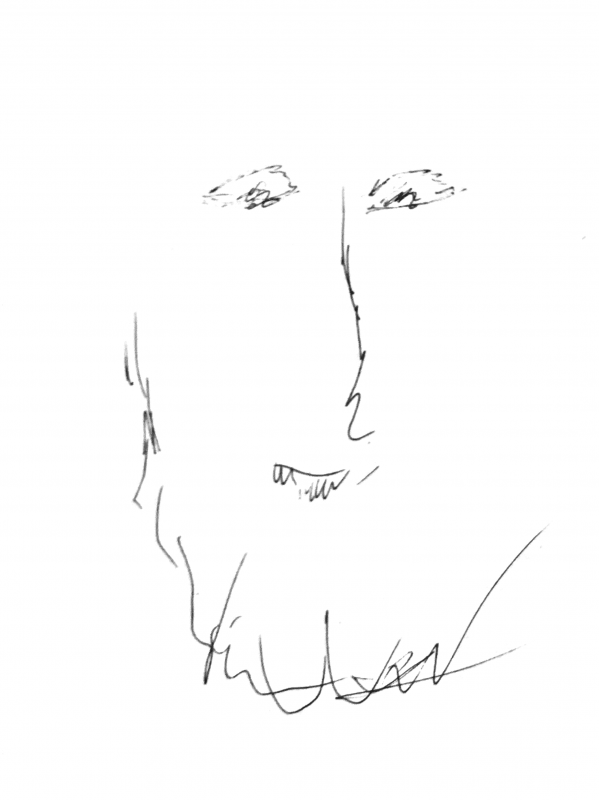
Images of Death, Commodity, and Cute Stuff
“[Man Is The Bastard] had an artful take on the dichotomy of powerviolence, in that they embraced peace, love, equality and respect to all living creatures as priority number one … They encouraged the blurring of gender roles and generalizations of all kinds—I mean, teenage boys all across the globe were turned on to sticky sweet Hello Kitty imagery. How righteous is that?” – Professor Cantaloupe[15]
“The fact that my label was called Slap a Ham is proof of what a goofball I am. When I was starting my label, I remember thinking how funny it would be if some of the world’s most brutal bands all wanted to be on a label with a ridiculous, non-brutal name.” – Chris Dodge (Spazz)[16]
“[W]hile cuteness exaggerates vulnerability … Murakami’s stylistic mutilation … calls attention to the violence always implicit in our relation to the cute object while simultaneously making it more menacing to the observer. The more [Murakami’s character] DOB appears to be the object or victim of aggression, the more he appears to be an agent of aggression.” – Sianne Ngai[17]
In the period of fermentation between D.R.I.’s 1983 debut Dirty Rotten LP and Infest’s 1988 album Slave was one in which a fiery, carefully directed rage was transferred to a more interior aesthetic squirm, caustic as it may have remained. This affect was later ossified in the name and output of a project called Spazz. Spazz was fronted by Chris Dodge whose label — Slap A Ham records — was a pioneering Bay Area home for many bands that fell under the powerviolence banner. Between 1990 and 1998, Slap A Ham released over 40 albums including work by Infest, Melvins, No Use For A Name, Neanderthal, Capitalist Casualties, Crossed Out, No Comment, MDC, Man Is The Bastard, and Melt-Banana. In 1998 (a decade after Infest’s Slave and about 15 years after Negative Approach’s 11-second sparkplug “Pressure”) releases the follow-up to its foundational Bllleeeeaaauuurrrrgghhh! – The Record (1991) with Bllleeeeaaauuurrrrgghhh! – A Music War, a 7” compilation on which Slap A Ham squeezed 73 bands (84 tracks) into 13 minutes. Bllleeeeaaauuurrrrgghhh! not only represents how large the scene around powerviolence and grindcore had grown, but is emblematic of the style’s relationship to commodity and production. Bllleeeeaaauuurrrrgghhh! is a hyper-commodity of little value, effect, or use. Its main appeal is its sense of novelty. Additionally, each band, viewed as nodes of aesthetic production, becomes nondescript against the white noise of the totality. In essence, Bllleeeeaaauuurrrrgghhh! is a cute disc of self-impeding monstrosity.
Ngai has it that, “cuteness is an aestheticization of powerlessness … and since soft contours suggest pliancy or responsiveness to the will of others, the less formally articulated the commodity, the cuter.”[18] And when powerviolence comes into full bloom we see an increasing illegibility in its music and message. The very title of the Bllleeeeaaauuurrrrgghhh! compilations is formless to the point of gimmick. It signals high-commodity to collectors. My feeling here is not that powerviolence necessarily appears to us as cute (“an aesthetic response to the diminutive, the weak, and the subordinate”[19]) but that its over-the-top and illegible aesthetic of monstrosity performs a similar function to cuteness as it “epitomizes the minorness of … all art in an age of high-tech simulacra and media spectacles.”[20] It points to a helplessness and basks in it. Powerviolence is the result of the hardcore mindset pushed to extremity, through-and-beyond the point of cuteness.
Man Is The Bastard—the most politically charged of the early power violence scene—left a visual mark by incorporating images of death, commodity, and cute stuff. A quick google search of “Man In The Bastard Hello Kitty” returns two band shirts, both appropriating the famous Sanrio character in a simple way (one has her face surrounded by a circle of MITB skull logos, the other has her standing forward, smiling and waving, with a thought bubble that says “Man Is The Bastard”). The character is clearly incorporated for juxtaposition but her form and her cuteness remain intact; she is neither defaced nor deformed. MITB founding member Eric Wood has said, “I was aware from the get-go how simple logos like the Flag bars, the Infest logo, and the Crass circle could give things an immediate persona. … You can go into all these realms of complicated presentation and the message can get lost. Basic is brutal.”[20] Thus, MITB’s visual identity adopts a concept of commercial design in order to critique it. However, their appropriation of Hello Kitty only critiques the original brand inasmuch as it associates with it, thus undermining the band’s own brutality: it’s a self-aware, self-conscious defense. Because the band’s aestheticization of violence is blatantly overcompensatory in the face of their helplessness under late-capitalism, they adopt and sympathize with Hello Kitty, the smiling little girl with a pink bow and no mouth with which to speak.
[1] Bartkewicz, Anthony. “Screwdriver in the Urethra of Hardcore.” Decibel Magazine, 2007, web.archive.org/web/20080224033317/http://www.decibelmagazine.com/features/jul2007/powerviolence.aspx. From web archive captured February 24th, 2008.
[2] Bartkewicz, Anthony. “Screwdriver in the Urethra of Hardcore.” Decibel Magazine, 2007, web.archive.org/web/20080224033317/http://www.decibelmagazine.com/features/jul2007/powerviolence.aspx. From web archive captured February 24th, 2008.
[3] Hayes, Craig. “Love, and Other Indelible Stains.” PopMatters, PopMatters, 24 Feb. 2018, www.popmatters.com/158457-love-and-other-indelible-stains-2495852412.html?rebelltitem=1#rebelltitem1.
[4] A389. “Infest Interview.” Midnight Mass, 9 Jan. 2014.
[5] Bartkewicz, Anthony.
[6] Rachman, Paul, director. American Hardcore. American Hardcore, Sony Pictures, 2006.
[7] Mudrain, Albert. Choosing Death: The Improbable History of Death Metal and Grindcore. Feral House, 2004. 51
[8] Domino, Matt.
[9] Kiberd, Roisin. “The Rise and Fall of ‘Boring Dystopia,’ the Anti-Facebook Facebook Group.” Vice, Vice, 22 Dec. 2015, www.vice.com/en_us/article/aekd5j/the-rise-and-fall-of-boring-dystopia-the-anti-facebook-facebook-group.
[10] Ngai, Sianne. Our Aesthetic Categories: Zany, Cute, Interesting. Harvard University Press, 2012. 97
[11] Ngai, Sianne. 96
[12] Infest’s Matt Domino describes the L.A. hardcore scene of the mid 80s as “very exciting, rather scary, and pretty fucking cool.” (Midnight Mass Issue 3)
[13] Ngai, Sianne. 96-97
[14] Ngai, Sianne. 96
[15] Bartkewicz, Anthony. “Screwdriver in the Urethra of Hardcore.” Decibel Magazine, 2007, web.archive.org/web/20080224033317/http://www.decibelmagazine.com/features/jul2007/powerviolence.aspx. From web archive captured February 24th, 2008.
[16] Bartkewicz, Anthony. “Screwdriver in the Urethra of Hardcore.” Decibel Magazine, 2007, web.archive.org/web/20080224033317/http://www.decibelmagazine.com/features/jul2007/powerviolence.aspx. From web archive captured February 24th, 2008.
[17] Ngai, Sianne. 85
[18] Ngai, Sianne. 64
[19] Ngai, Sianne. 53
[20] Ngai, Sianne. 59
[21] Knight, James. “Eric Wood From Man Is The Bastard.” Vice, Vice, 1 Oct. 2008, www.vice.com/en_us/article/exan44/eric-wood-158-v15n10.
More from this issue